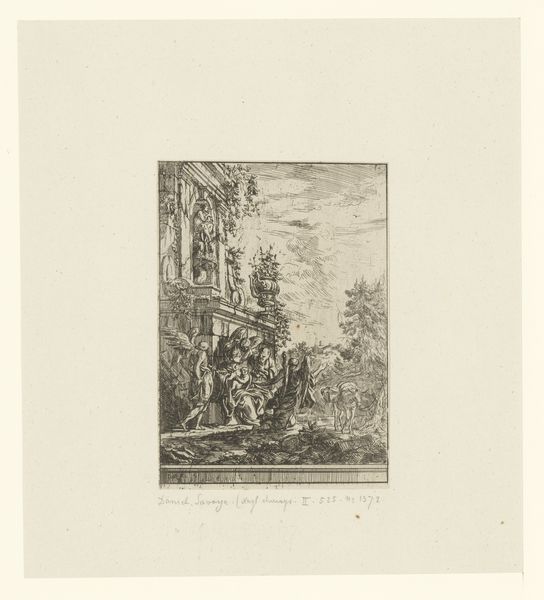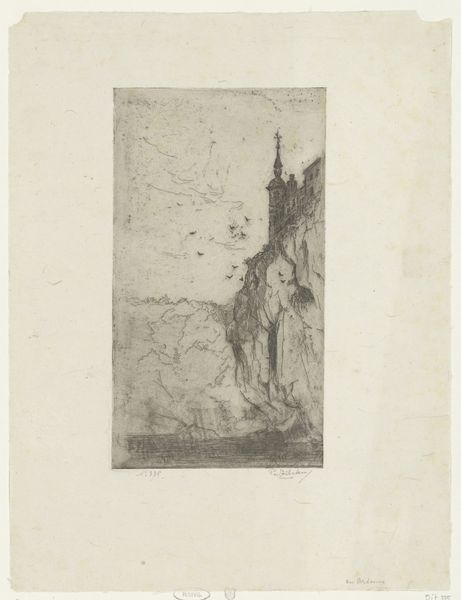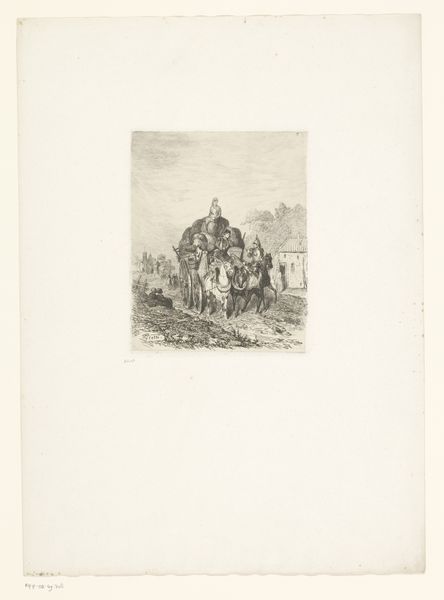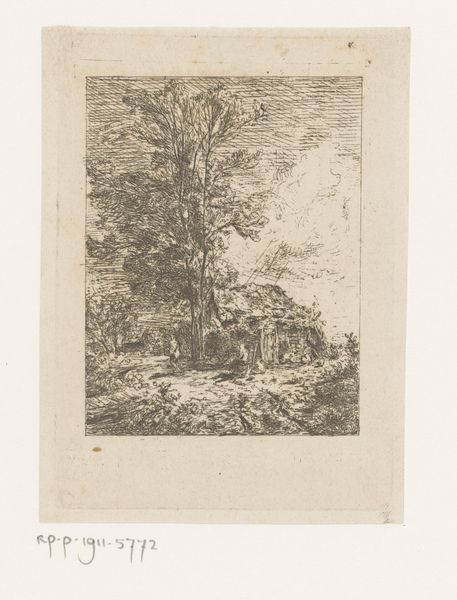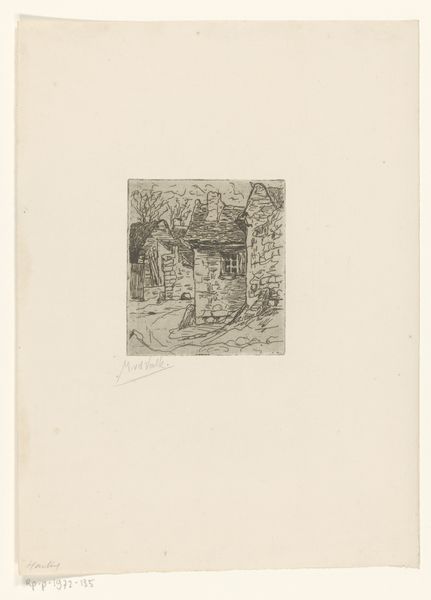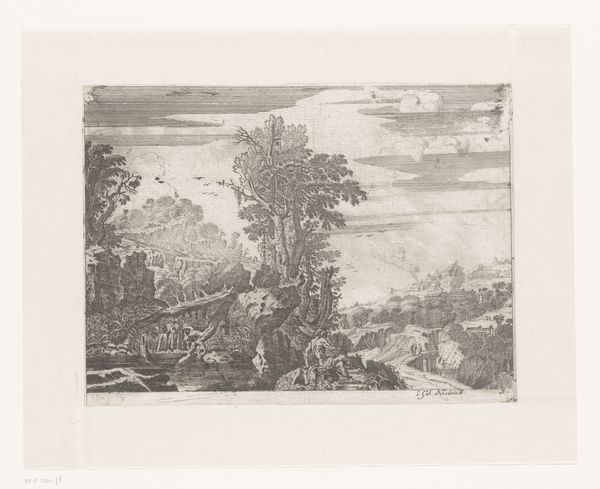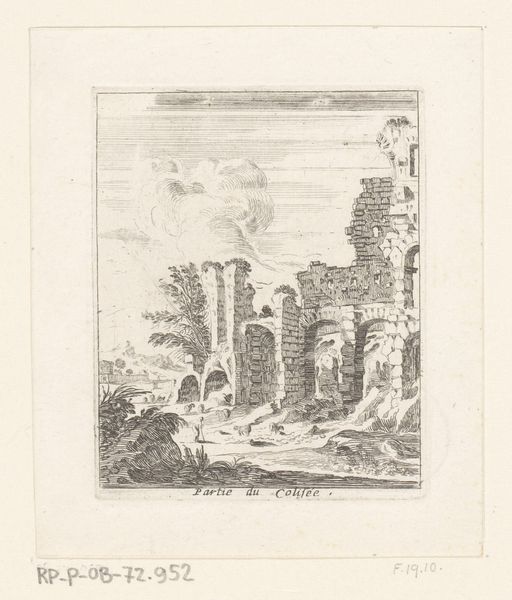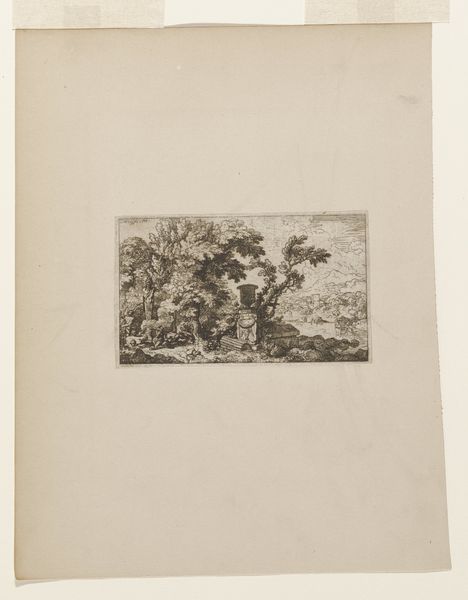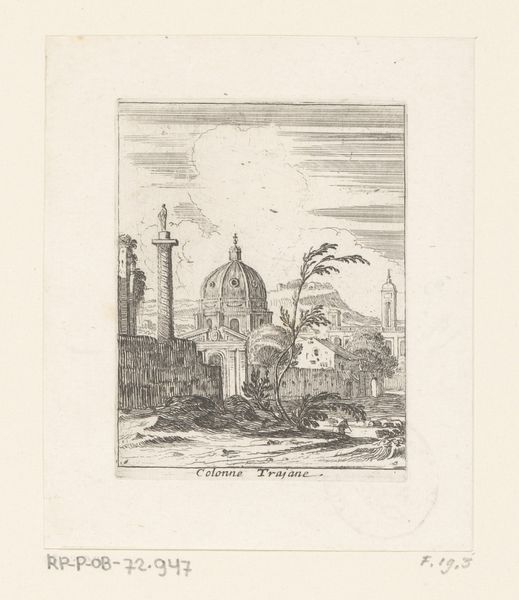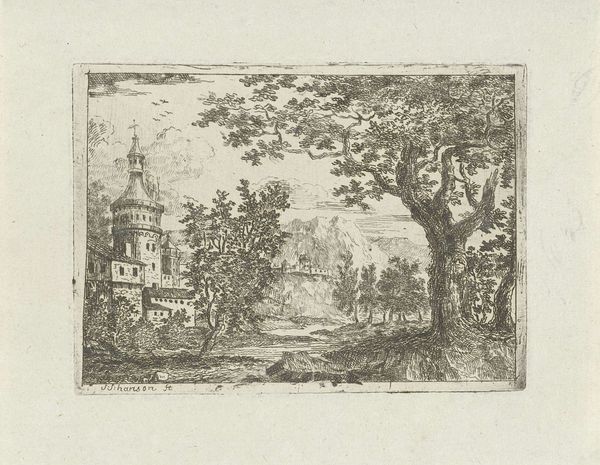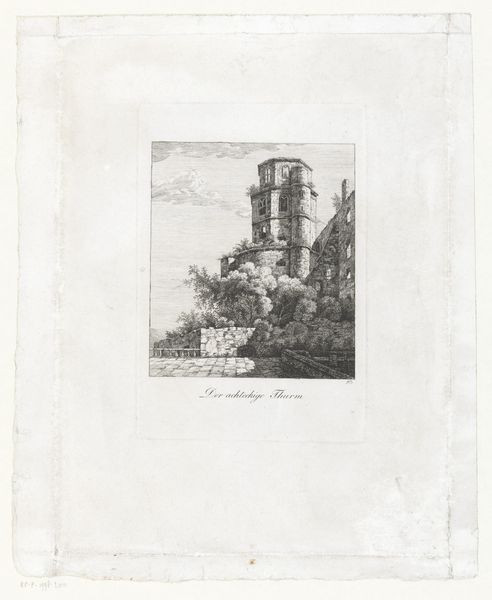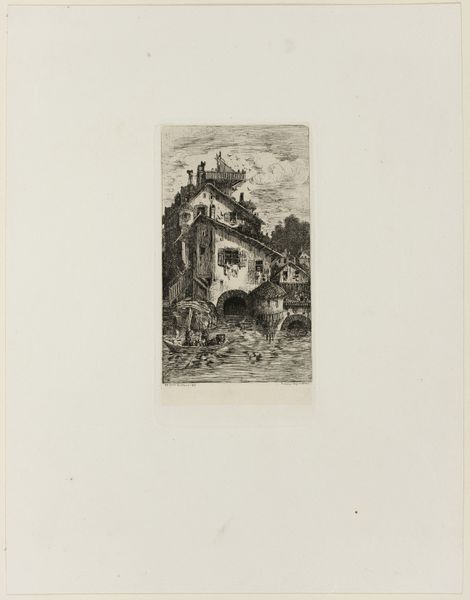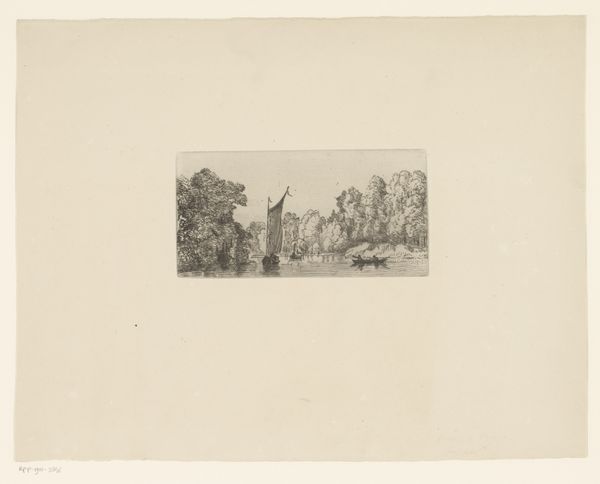
Landschap met bomen op de oever en een boot in het water 1849 - 1885
0:00
0:00
print, etching
#
16_19th-century
# print
#
etching
#
landscape
#
realism
Dimensions: height 270 mm, width 174 mm
Copyright: Rijks Museum: Open Domain
Curator: Look at this serene landscape. It's an etching by Karel Theodoor Hippert, probably made sometime between 1849 and 1885. It's called "Landschap met bomen op de oever en een boot in het water," which translates to "Landscape with trees on the shore and a boat in the water." It’s currently part of the Rijksmuseum collection. Editor: Ah, my first impression is a gentle melancholy. The soft lines of the etching give it an almost dreamlike quality. It feels like a memory of a summer day. Is that dramatic sky weighing things down or is it about to break into the clear blue and warmth? Curator: Interesting point! Etchings like this one became popular because they allowed artists to create prints that felt more like drawings. Think about how Hippert has captured the texture of the leaves and the reflection on the water; this technique provided new modes of artistic expression in a rapidly industrializing Europe where romanticism sought solace in nature. Editor: Right, that texture is gorgeous, especially in the sky and water. And the way the trees are grouped together almost feels like figures huddling. I wonder if that was his intention, and how his technique contributed to how art, such as nature paintings or simple landscape works like this one, can influence even politics and industrialism. Curator: Maybe! The scene’s very romantic, very much a slice of Dutch life, especially for a period where industrialization threatened many idyllic natural landscapes. The etching process would have allowed Hippert to reproduce and distribute this image fairly widely, promoting a certain view of the Dutch countryside as an emotional balm or even a national symbol of resilience, especially at a time when those images were being contested by the fast moving nature of urban society. Editor: A symbol, yes, perhaps of simple resistance. Now, looking again, that little boat seems almost lost. But it offers a human-scale, perhaps an invitation to remember that all things great and small belong to the landscape of our human awareness, no matter where we are. Curator: It gives it a narrative pull, doesn't it? Now, knowing the cultural history around art and production during this period adds more weight to this landscape as more than an idealized snapshot in time. Editor: It’s true. Now, when I look at the piece and recall our conversation, it feels so full. I could stay in this dreamy landscape a long time.
Comments
No comments
Be the first to comment and join the conversation on the ultimate creative platform.
